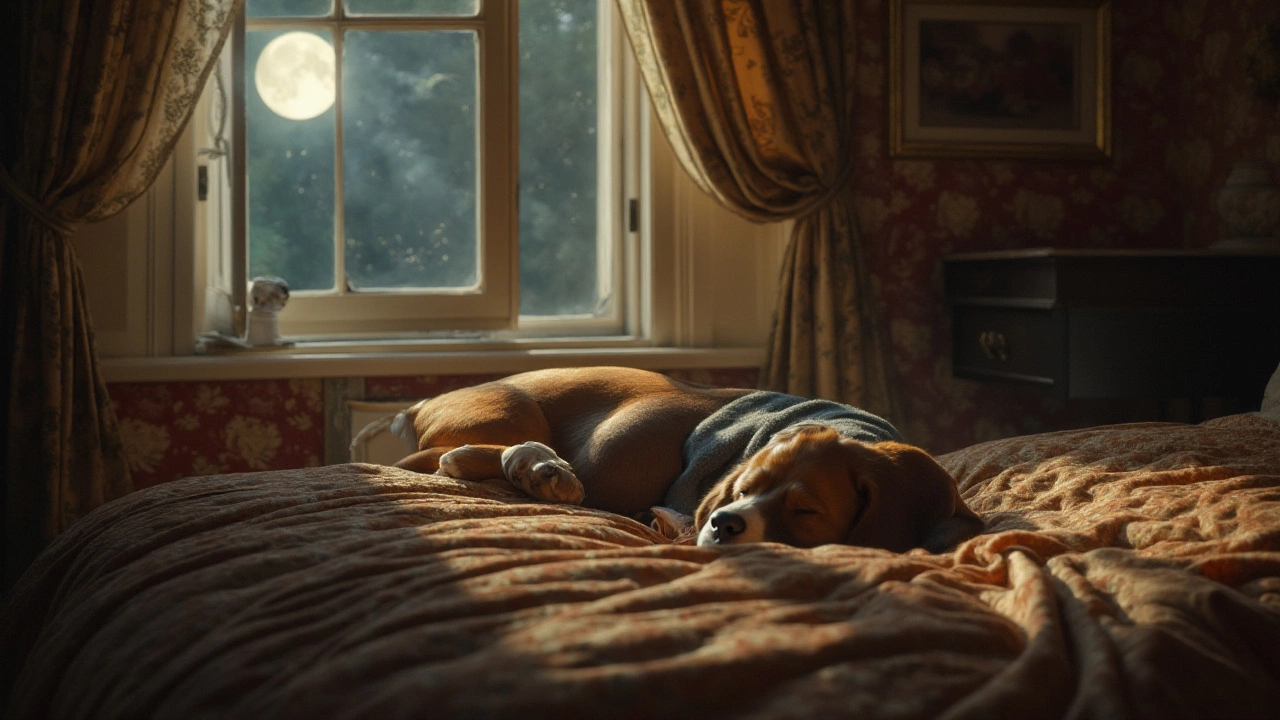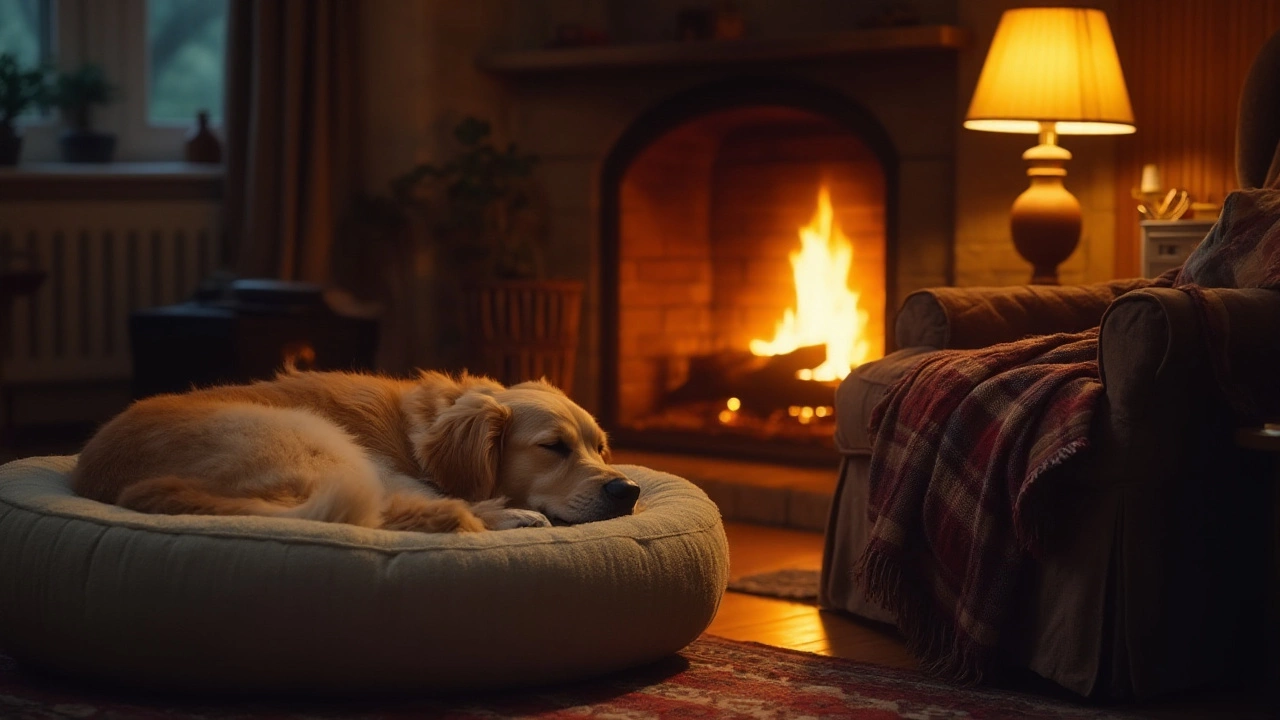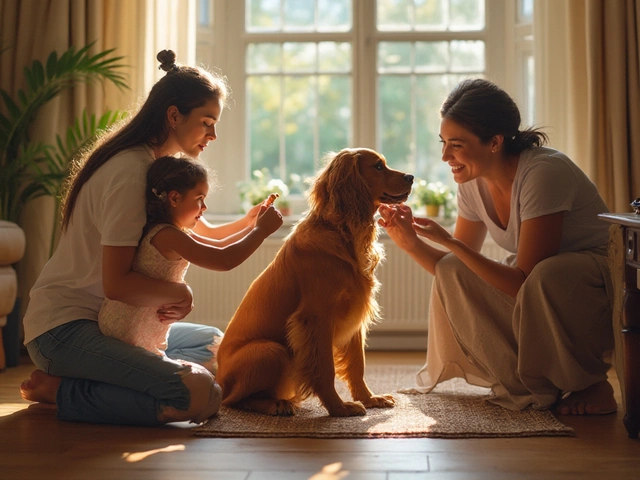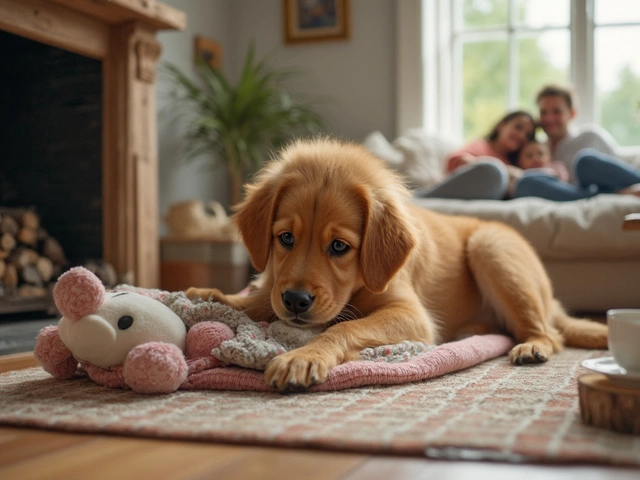When it comes to the world of dogs, their preferences can be as varied as those of humans. Whether your furry friend prefers a dimly lit room, complete darkness, or basking in the moonlight, understanding how light affects their sleep can be helpful. Many dog owners wonder if it's beneficial to let their dogs sleep in the dark or if it makes no difference at all. What drives Ralph, your ever-loyal companion, and his nightly choices might surprise you.
In this insightful piece, we'll delve into the sleeping habits of dogs and uncover the mystery of whether darkness truly makes a difference. From their instinctual nature to modern-day conveniences, there's much to learn about how best to provide your dog with a restful night's sleep. So, let's shine a light on whether your pooch enjoys sleeping with or without it!
- Understanding Dog Sleep Preferences
- Role of Light in Dog's Sleep
- Benefits of Sleeping in the Dark
- Creating the Ideal Sleeping Environment
- Tips for a Restful Night for Your Dog
Understanding Dog Sleep Preferences
Dogs have wonderfully unique sleeping habits, which can vary significantly even among the same breed. While humans are known for their structured sleep patterns, many dogs follow an entirely different rhythm. Our four-legged friends don't just sleep when the sun dips below the horizon; they have napping down to an art form. Each dog's sleep preferences can be shaped by a myriad of factors, ranging from their age and breed to their individual personality and experiences. It’s intriguing to see how a dog, just like Ralph, will have favorite spots to catch some shut-eye, often preferring spots that offer a sense of security and comfort. Some may curl up near their owner, while others enjoy a plush dog bed tucked in a corner. Understanding these unique behaviors can really help an owner cater to their pet's needs.
Dogs are essentially polyphasic sleepers, which means they tend to sleep multiple times throughout a 24-hour period. They cycle through periods of wakefulness and sleep, nodding off when they’re bored and alerting quickly to sounds in their environment. This sleep pattern is quite different from adults, who normally get a good amount of their sleep in one prolonged session. For instance, dogs spend less time in rapid eye movement (REM) sleep, which is why they might not sleep as deeply as we do. The reduction in REM sleep can make them more prone to waking up, which is another reason why their preferred sleep setup is crucial. Ensuring that they're comfortable, perhaps in the dark, can extend this vital rest period.
The American Kennel Club notes, "Dogs sleep a lot more than people, but their nocturnal sleep cycles are much shorter and less deep, making the right sleep environment essential for their health and happiness."
Moreover, various external factors can influence a dog's sleep preference. Sounds, odors, and temperature can all make a large impact on whether your dog gets a restful nap or just a few minutes of tossing and turning. The level of light in the room can be particularly important. Some dogs like the comforting sensation of darkness, while others might prefer a nightlight or some ambient light from a hallway. Creating a good sleep environment doesn’t necessarily mean total darkness is required, but gauging what helps your dog relax more is the key. Understanding these elements offers invaluable insight into your pet’s world, enhancing both their quality of sleep and their quality of life.
Role of Light in Dog's Sleep
Light plays a significant role in the sleep patterns of not just humans but also our beloved pets. Dogs, being descendants of wolves, have naturally adapted to a crepuscular lifestyle, which means they are most active during twilight hours. This does not mean, however, that they need complete darkness to fall asleep. They're quite capable of adapting to various light conditions, but understanding how light affects their slumber can actually help in providing them with the most comfort.
The presence or absence of light influences the sleep-wake cycles of dogs through the secretion of melatonin, a hormone responsible for regulating sleep. Just as in humans, light exposure can inhibit melatonin production, making it more challenging for your dog to fall asleep. This suggests why some dogs might be reluctant to lay down for the night in brightly lit areas. Understanding these natural inclinations can help foster an environment where your dog's sleep schedule aligns more closely with their natural rhythms.
It is worth noting that while darkness is often equated with a better sleeping environment, certain environmental factors can influence whether your dog truly benefits from it. Dogs have exceptional vision that allows them to see better in low light than humans, so a dim atmosphere can be quite comfortable. During a clear, moonlit night, your dog might find the faint light reassuring rather than a disruption. As research indicates, dogs can distinguish between levels of light, which can be crucial information for pet owners aiming to enhance their pet's comfort and wellbeing.
"Dogs have a biological clock that helps them understand times of the day and anticipate future events, which can be influenced by environmental light," says Dr. Chris Zink, a well-known veterinarian. Understanding this can improve how pet owners cater to their pet's living environments, maximizing a dog's comfort.
In some cases, especially with dogs that may experience anxiety or have a history of trauma, a little light at bedtime can offer a sense of security. Night lights can be employed to provide a comforting glow, easing any stress associated with sleeping in total darkness. It's about finding the right balance that suits your dog's individual needs, as what works for one may not be suitable for another. Creating a custom sleeping arrangement for your dog may involve some trial and error, but the effort will undoubtedly lead to a more restful and contented pet.
On a practical level, consider the types of light sources in your dog’s sleeping area. LEDs and other modern light sources have different effects on animals than traditional incandescent bulbs. Dogs can even be sensitive to the flicker of certain types of lights which humans can't detect. Testing different bedroom setups may help discern your pet's preference and lead to an optimal sleeping environment.

Benefits of Sleeping in the Dark
Creating the right sleeping environment for your pet can be crucial for their health and happiness. One significant factor that can influence dogs' sleep is whether they sleep in a lighted or dark room. Many dogs find darkness comforting, as it mimics the natural comfy conditions of a den, which is where their ancestors used to sleep. This sense of security can help your dog lower stress levels, leading to a more restful and uninterrupted sleep. The absence of light signals to their body that it's time to rest, following the natural circadian rhythms common among mammals, including humans.
Darkness helps in promoting the production of melatonin, a hormone that aids in sleep regulation. Melatonin plays a crucial role by not only helping your dog fall asleep faster but also by promoting deep sleep, which is essential for their overall well-being. Without sufficient dark hours, your furry friend may experience shallow sleep, which can lead to irritability or sluggishness during their waking hours. A study published by the Journal of Veterinary Behavior noted that maintaining a consistent dark sleeping environment can improve a dog's quality of life significantly by aiding in their cognitive function and mood stabilization.
"A regular sleep cycle influenced by light and dark can positively affect dogs' health," says Dr. Karen Overall, a noted animal behaviorist. "Just like humans, dogs thrive when their internal clocks are aligned with their external environment. Ensuring they get the dark they need at night is crucial."
Moreover, reducing light exposure at night can help in minimizing stimulation. Street lights, indoor lighting, and even sudden flashes can disturb a dog's sleep, triggering them to become alert suddenly. By ensuring your dog's bed is positioned in a tranquil, dimly lit area, you'll be creating a restful space where they can feel safe and undisturbed. It's especially beneficial for older dogs or those who may be anxious, as it removes potential stimuli that could disturb their sleep. Setting up blackout curtains or providing a covered sleeping area can create this serene oasis, shielded from distracting light sources.
For pet owners who might be concerned about their dog navigating their home in the darkness, rest assured that dogs have an exceptional ability to adjust to low-light conditions due to their superior night vision compared to humans. Keeping pathways clear and minimizing hazards will help ensure they can get around safely, even in the dark. So, consider indulging your pet with a quiet, dark setting as part of their bedtime routine and observe the positive changes in their sleep patterns and daily energy.
Creating the Ideal Sleeping Environment
Shaping the perfect night-time haven for your dog entails a mix of comfort, security, and attention to detail. Dogs are creatures of habit and thrive in an environment that mirrors their natural inclinations. For many, a dark space provides a sense of safety and calm, echoing the dimly lit dens of their ancestors. To start with, consider your dog's sleeping arrangement. An ideal spot would be secluded from noise and disruptions, offering them the quietude needed to fall into a deep sleep. A dog bed that's appropriately sized and positioned away from drafty areas will help your furry friend achieve restfulness.
Lighting can significantly affect how well your dog sleeps. Remember, dogs have stronger senses than humans, and even subtle lights can be distracting. If your dog is one that appreciates a dark sleeping environment, try using blackout curtains or a room without windows. This way, they aren't disturbed by street lights or the early morning sun. On the other hand, some dogs might find a small night light comforting, especially the younger ones who are still getting accustomed to their surroundings.
The ambient temperature also plays a crucial role. Dogs, just like us, prefer a cozy temperature. The guarded comfort of a temperately managed room aids in relaxing their muscles and regulating their body. It's interesting to note that research has pointed out how certain temperatures influence canine sleep cycles, potentially affecting your pet's rest quality.
"Providing a consistent environment mimics nature's cycles, supporting regular sleeping patterns," says Dr. Sarah Jones, a veterinary behaviorist.Ensuring the sleeping surface is clean and free of allergens such as dust mites can also keep disruptions at bay. Regular cleaning and choosing hypoallergenic materials for their beds are essential steps.
Sounds and Scents
Addressing the sensory environment extends beyond sight to sounds and smells as well. Keeping disruptive noises to a minimum during sleep hours helps tremendously. If your home is in a bustling area, a white noise machine could provide soothing background noise to drown out more abrupt sounds. Dogs are known for their keen sense of smell, and relaxing scents like lavender can be used—either through diffusers or sprays—to establish a calm mindset before bed.
A dog’s routine is also essential in establishing a comfortable sleep environment. Regular feeding and walking schedules align their bodily rhythms, creating a natural bedtime routine. Try to implement a gentle wind-down period before bed that might include relaxed playtime or gentle petting. The consistency helps signal their mind and body to switch into night mode. This secure routine can foster the kind of environment where your dog feels entirely at ease to sleep throughout the night.
Nurturing Bond
Ultimately, the ideal environment is also about fostering the bond between you and your dog. Your presence, the smell of home, and a routine steeped in love and care create a safe space your dog will cherish. Creating this environment doesn't require elaborate setups, just attention to what makes your dog feel secure, calm, and most importantly, comfortable. Dogs, with their unwavering loyalty, depend on you to ensure their well-being and comfort, leading to many peaceful nights of sleeping bliss.

Tips for a Restful Night for Your Dog
Ensuring that your dogs have a restful night can significantly impact their overall well-being. One crucial aspect is setting a comfortable and consistent sleeping environment. Start by choosing the right bed for your pet based on their size, sleeping style, and any health considerations, such as joint support for older dogs. The bed should be placed in a quiet, safe area away from drafts and direct sunlight. Dogs are creatures of habit, so establishing a nightly routine can signal to your furry friend that it's time to wind down. This could include a gentle walk or a calm activity to help burn off any leftover energy from the day.
Room temperature also plays a big role in a dog’s comfort during the night. Ensure that the sleeping area is neither too hot nor too cold. Providing a cozy blanket, especially in cooler months, can add a layer of warmth. Pay attention to noise levels in the house. Dogs, with their keen sense of hearing, might be disturbed by even the faintest of sounds, so make adjustments if necessary. If you notice your dog is restless, it might be a good idea to investigate what's disrupting their sleep cycle.
According to the American Kennel Club, "Establishing a bedtime routine is key to helping your dog settle and prepare for sleep."
It's fascinating to note that sleeping preferences can vary widely among dogs. While some may be perfectly content with a silent, dark room, others might enjoy the comfort of a nightlight or the soothing sound of a low-volume television. This is where knowing your dog’s unique personality and preferences will guide you in creating the ideal sleeping setup. For some, a calming background noise, like white noise, can help drown out other disturbances and make for an uninterrupted sleep.
Diet and exercise are other critical components. A well-fed and well-exercised dog is more likely to experience sound sleep. Avoid feeding a heavy meal right before bedtime, as it can lead to discomfort or energy spurts. A balanced diet throughout the day, coupled with sufficient play and exercise, can make a significant difference. An evening walk serves as an excellent way to help them relax and signal the end of the day's activities.
Lastly, regular vet check-ups are essential to rule out any underlying health issues that could affect sleep. Certain conditions, such as arthritis or anxiety, might require specific treatment or medication. Also, be mindful of your dog's psychological state. Just like humans, dogs can suffer from stress, which can severely impact their sleep patterns. A reassuring presence and a calm atmosphere can do wonders to ease their worries. Remember, every dog is different; some trial and error might be necessary to find what works best for your sleeping pooch, but the results will be worth the effort.







